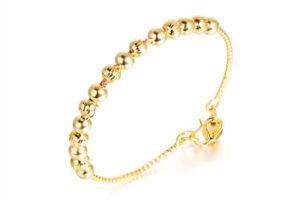Starting a business is one thing while deciding how to price your goods is a whole different other. When you finally get started and are able to offer products that you have labored to bring to the market, you may wonder how much to charge.
Pricing is everything as it sets the pace for how your product is going to be perceived on the market. Go too low and two things are bound to happen. Consumers may wonder what the catch is, thinking that the product could be inferior and therefore staying away, or they may decide to buy that product in their numbers. Sure, you will make plenty of sales in the end, but the income will barely cover your expenses. If you go too high, you could exude the aura of luxury, effectively cutting off a section of the market.
So, how do you calculate retail price from wholesale and markup?
First, marking up. The ratio between the cost of a good and the selling price of that good is known as mark-up. You can either express it as a percentage of the cost of making a product or as a fixed amount – this is usually company or industry policy. The markup you apply should cover the overall cost of arriving at the product, breakeven, and make you some profit.
1. Retail Pricing
There are a few ways to decide the price of your goods or services.
2. Keystone Pricing
This method is preferred by most for its simplicity. You simply take the price you paid for an item and then double it to get your retail price. This will make your mark-up 100% and while it may seem a lot, you ought to consider other things included such as expenses – salaries and transport among others. When you deduct these expenses from your sales price, you may be left with less than 50% of your initial mark-up as your net profit, which will reduce further after tax.
The main advantage of this method is its simplicity where you don’t have to sweat too much to reach the price of a product or service. The downside is in the absurdity of the mark-up especially when you have stiff competition.
3. Industry Benchmarking
Sometimes, you just have to look at what the competition is doing and then adopt the same pricing. Say you are a beauty retailer selling the same beauty products as your next mid-economy range of products. It would be absurd to sell a cleanser for $50 with everyone else selling perfectly effective cleansers at $35. Unless you can prove that your product is more superior or market it to target the higher end of the consumer group, your sales could suffer.
The main advantage of this method is also in its simplicity and the fact that you will be at the same level as the rest of the industry. Downside: your expenses could be more and so your profits would suffer.
4. Manufacturer Suggested Retail Price
Take Coca Cola’s strategy. Because this global player has presence in (almost) all habitable continents, it can set the price for its products that all retailers have to abide by. When a manufacturer has higher bargaining power than a distributor, they will want to set the price to ensure uniformity among all retailers.
The main pro of this method is that the seller gets a clear indication of their selling price without the headache of deciding prices. The downside, of course, is the fact that you have to work harder to work out an advantage over your competition.
Related Posts might help with your business
Looking for Fashion Jewelry Manufacturer? – 6 Things Must Consider
Wholesale Jewelry from China? (2023Step by Step Guide)
How to promote jewelry business on Facebook (2023 Updated)
21 Wholesale Fashion Jewelry Distributors in China/USA/UK
5. Getting the Wholesale Price and Mark-up
Here is how you get the wholesale price. (Labor + Materials) x 2 = Wholesale price. You multiply by 2 to cater for the overhead and profit that you expect to make when you sell the product. The next step will be determining the costs that are necessary for the sale to be effected, majorly labor and transport cost to get to retailers. They are also going to mark-up before selling, this you want to have in mind. You will need to divide the total cost by number of units you expect to produce to get cist per unit that you will apply to a single product.
Here is how you get the Manufacturer Suggested Retail Price (MSRP): Wholesale Price x 2. So, say you spend $4 on material to make a pair of earrings and the labor amounts to $13. The total cost will be $17, which makes your wholesale price $34. The earrings will retail at double that; $68.
There are other matters to consider too when setting the MSRP such as other costs associated with distribution so that the other parties involved don’t suffer.
There have been other pricing strategies used mostly by retailers when deciding the cost of a product.
At the introduction of a product, the company could decide to sell it at a lower price at first just to get people excited and to allow for penetration. This decision is based on the thought that upon purchase, consumers will have a taste of the product and want more of it in the future, by when the company will have reverted to normal prices. This strategy works best for companies mass producing as the cost can be covered effectively when sales catch up later.
- Bundling up
If you have a set of products that are regularly used together, then it would be a good idea to bundle them up and sell them at a price lower than what single units would have cost. Say, you have a pair of earrings, a bracelet, and a neckpiece all selling for $60, while each of the products sold separately could go for $30. People will prefer to buy the bundle and save $30, while you benefit from increased sales to cover any likely loss.
Conclusion
We hope this article helped you decide how to price your products and services. There are no rules, really as a business should use any of the above methods that it deems fit.





